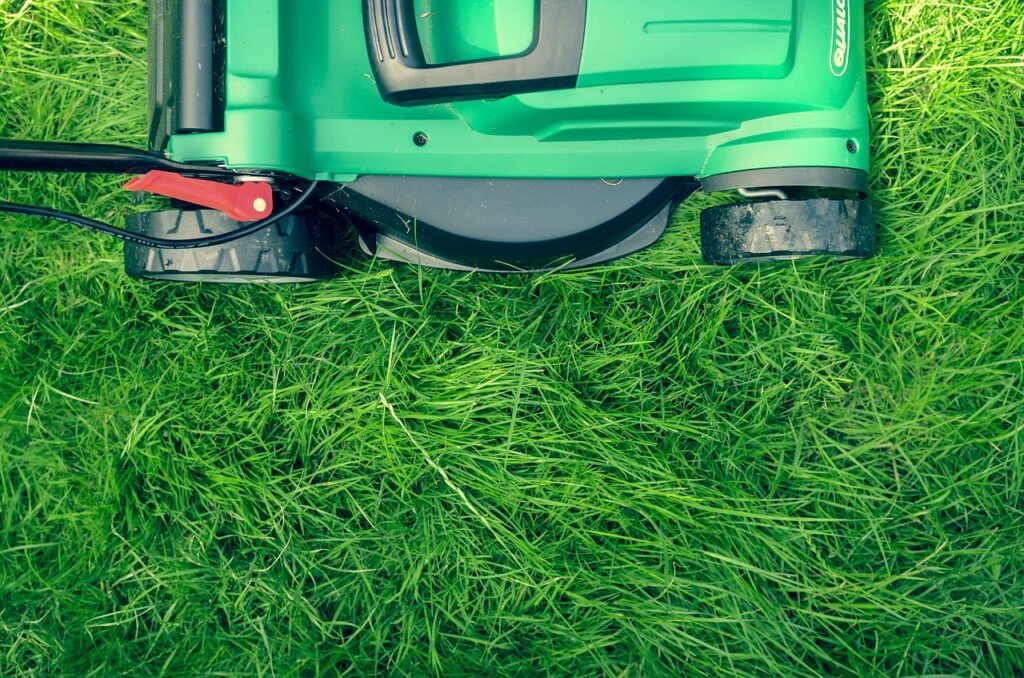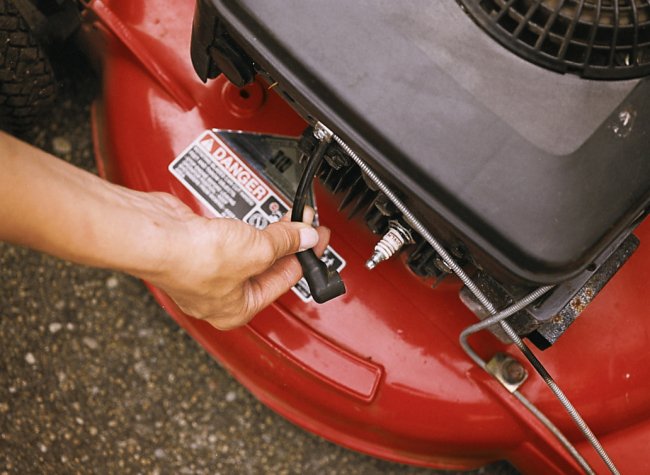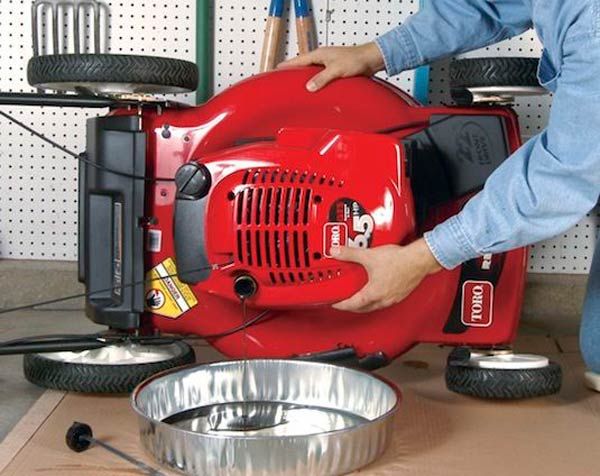If you suddenly notice spluttering of your mower or if your mower refuses or takes longer than usual to start, there’s a high likelihood that you are looking at a situation that involves either bad gasoline.
In other cases, the problem might have to do with a malfunctioned spark plug, although gasoline is the most likely culprit. But just to be safe, you need to check and confirm whether the spark plug is still in perfect working condition or not. If the spark plug is in perfect condition, it means that you are dealing with a gasoline problem.
For instance, there may be presence of stagnant gasoline that’s been at the bottom of your fuel tank for way too long, say, during winter, and when this happens, there will be the separation of the gasoline components, and some of the deposits will sink .
When this happens, the combustion fuel that floats to the top is of poor quality, and when this fuel finds its way to the carburetor, a component which is extremely sensitive to fuel quality, the fuel filters will be clogged, and the performance of the engine will be affected significantly.
But even with the potential damage to the carburetor and the clogging of your mower’sfuel filters, you need to keep in mind that in as much as the gasoline has been at the bottom of the tank for way too long, it would be a terrible idea for you refill the fuel tank with new gasoline.
Why? Well, the moment you introduce fresh/ unadulterated gasoline into the fuel tank, if it bad gas, the old gasoline deposits will be broken loose once the new gasoline is introduced, making an already bad situation worse.
With this in mind, you need to make sure that one of the things you do as you prepare for a new mowing season is the draining of the gas tank and to rid the tank of every potential atom of old gasoline before you introduce new gasoline. By doing this, you will not only improve the shelf-life of your mower’s tank but also boost the performance of the engine for use in the next season.

Table of Contents
Two Major Signs of bad gasoline
Before we look at the steps you need to take to drain and replace the old gasoline in the tank, let’s take a look at the other signs of bad gasoline:
1. Difficulties starting, and when the mower starts, it stalls after a few seconds
Often, this happens when water gets int the gasoline tank either through water seepage through the gas cap or through condensation when water seeps into the tank and sits with the old gasoline. In either case, water will mix up with gasoline within the gas tank, where it will sink to the bottom because of its high density.
When this happens, the carburetor will suck in gasoline from the mower’s tank, and water will be sucked into the engine along with the gasoline. The sucked water will then mix with oxygen plus the fuel, entering the combustion chamber, hence the starting and the stalling issues.
2. Slow and overall poor performance.
This is the other tell-tale sign of gasoline issues, and you can always tell that there is an issue when the machine doesn’t get the right level of acceleration or if it surges the splutters and dies on the throttle. These are also signs of water damage to the fuel system.
The key to keeping your mower running smoothly is by servicing it regularly.
So, How Do You Drain Old Gas From The Fuel Tank?

1. First, you need to park your lawnmower against a flat surface after its last use for access to its underside. But be sure to avoid tipping off your mower on its sides because doing so would force old gasoline into other parts of the engine, from the gas reservoir. So, keep it stationary.
2. Disconnect your spark plug. To do this, pull out the spark plug’s wiring from the cap.
3. Now, if the lawnmower features dedicated fuel line to the carburetor from the fuel tank, draining gas will be pretty easy, and all you will have to do is to set a sturdy collection plastic under the tank. Next, disconnect your fuel line from and then allow the older gasoline to drain to the clean container.
4. But if your lawnmower has no direct carburetor-tank connector present, then you will need a siphoning device for draining gasoline. Place the siphon’s clear end into a clean jug then connect the siphoning end (made of brass) to the mower’s tank, then shake it vigorously up and down and also sideways. Doing this will kick off siphoning hence the seamless flow of gasoline to the collection jug. Repeat this step until draining is complete.

5. When siphoning is complete, you’ll need to remove the siphoning end, before setting up the right siphon pipe. This helps in getting rid of all the gasoline residue. A rag would soak up all the gasoline remaining from your fuel tank.
6. Add some fresh gasoline, slosh the gasoline around, then drain off all the new gasoline mixture to another container.
7. Allow the adulterated gasoline to drain off completely and allow it to dry for some time before you reattach the spark plug’s wire and the fuel line. Make sure that the filters are clear, and if they aren’t, replace the filters.
8. Fill up the reservoir, then start the mower, and allow it to run on idle mode till it stops. Now clear the carburetor off the old gasoline.
9. Place your mower back in an upright position, and then refill the fuel tank using new gasoline. Startup the mower again. There will be some spluttering, but once the fuel burns, it will be good to go.
Conclusion
These are the simple steps that you need to follow. Always remember to put in unadulterated gasoline before a new season and perform the maintenance works before storing the mower in winter.

